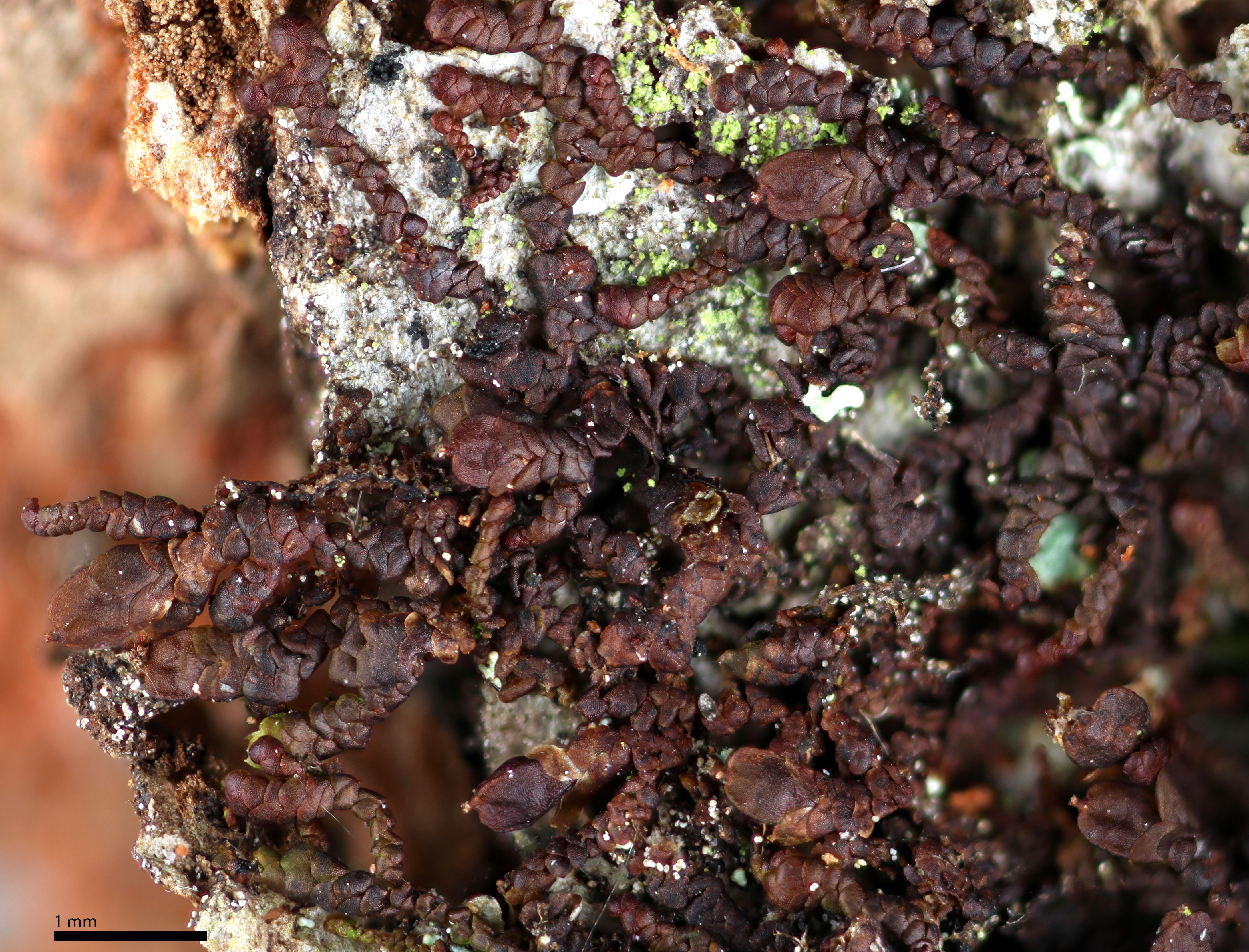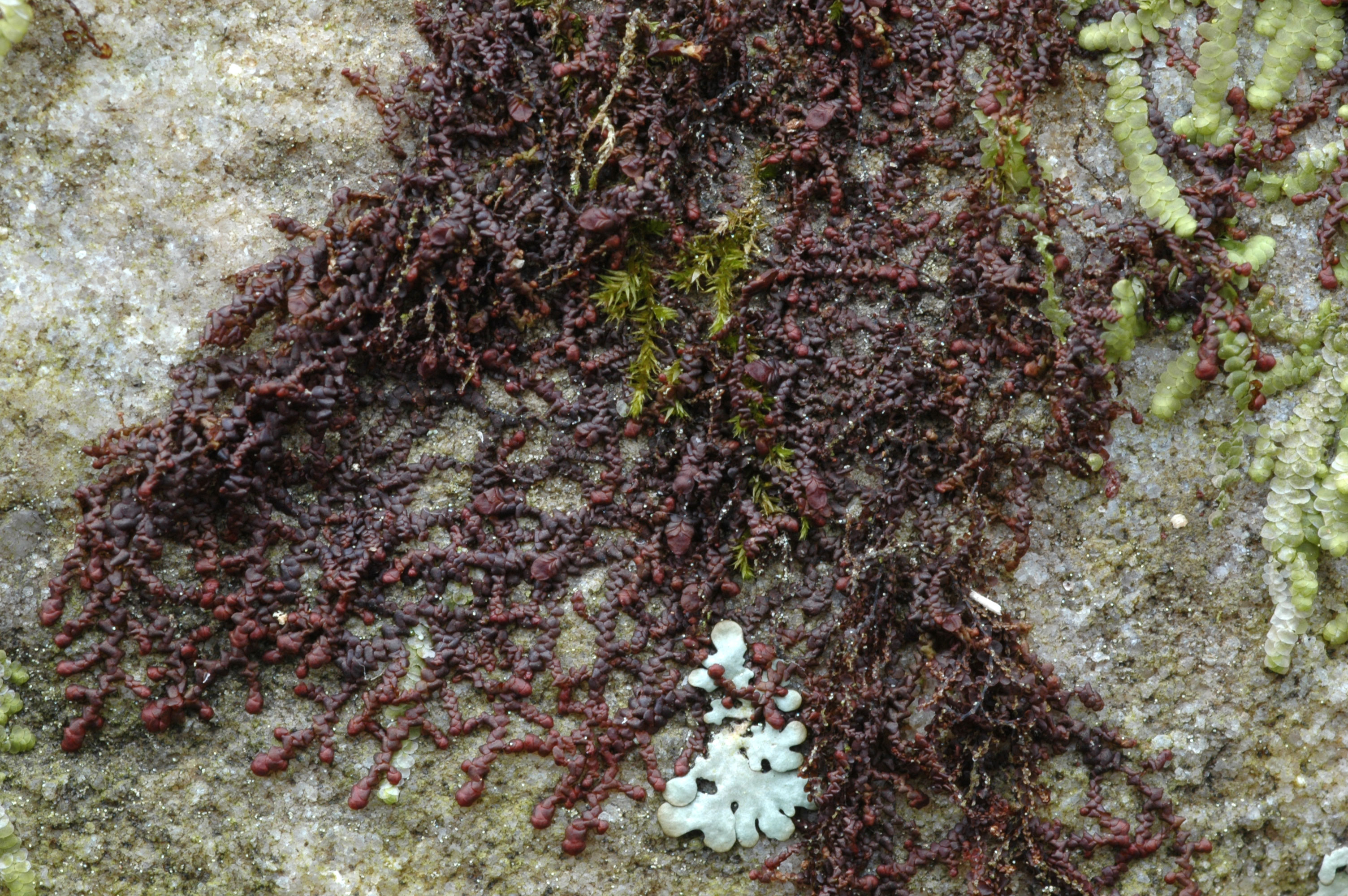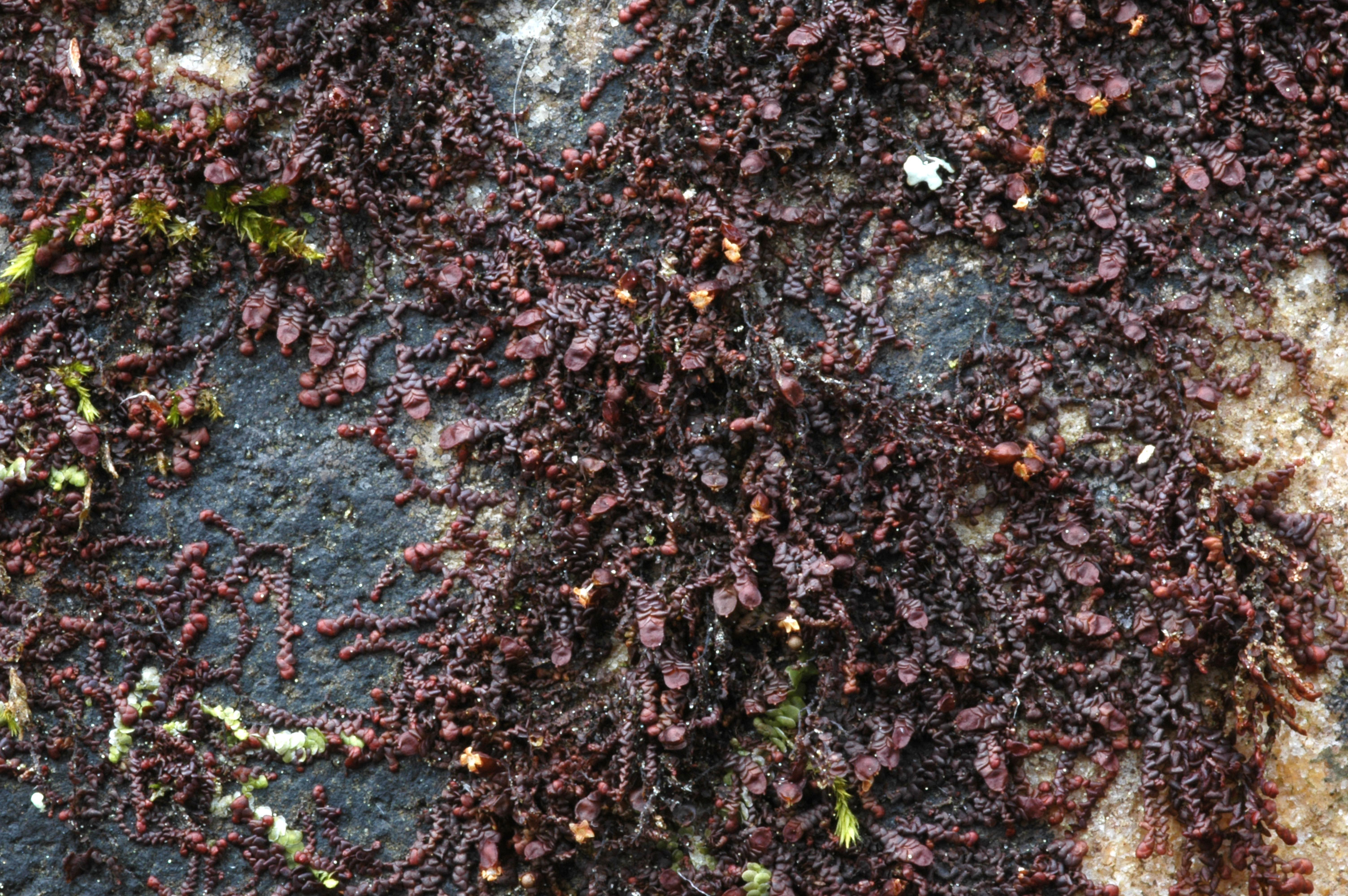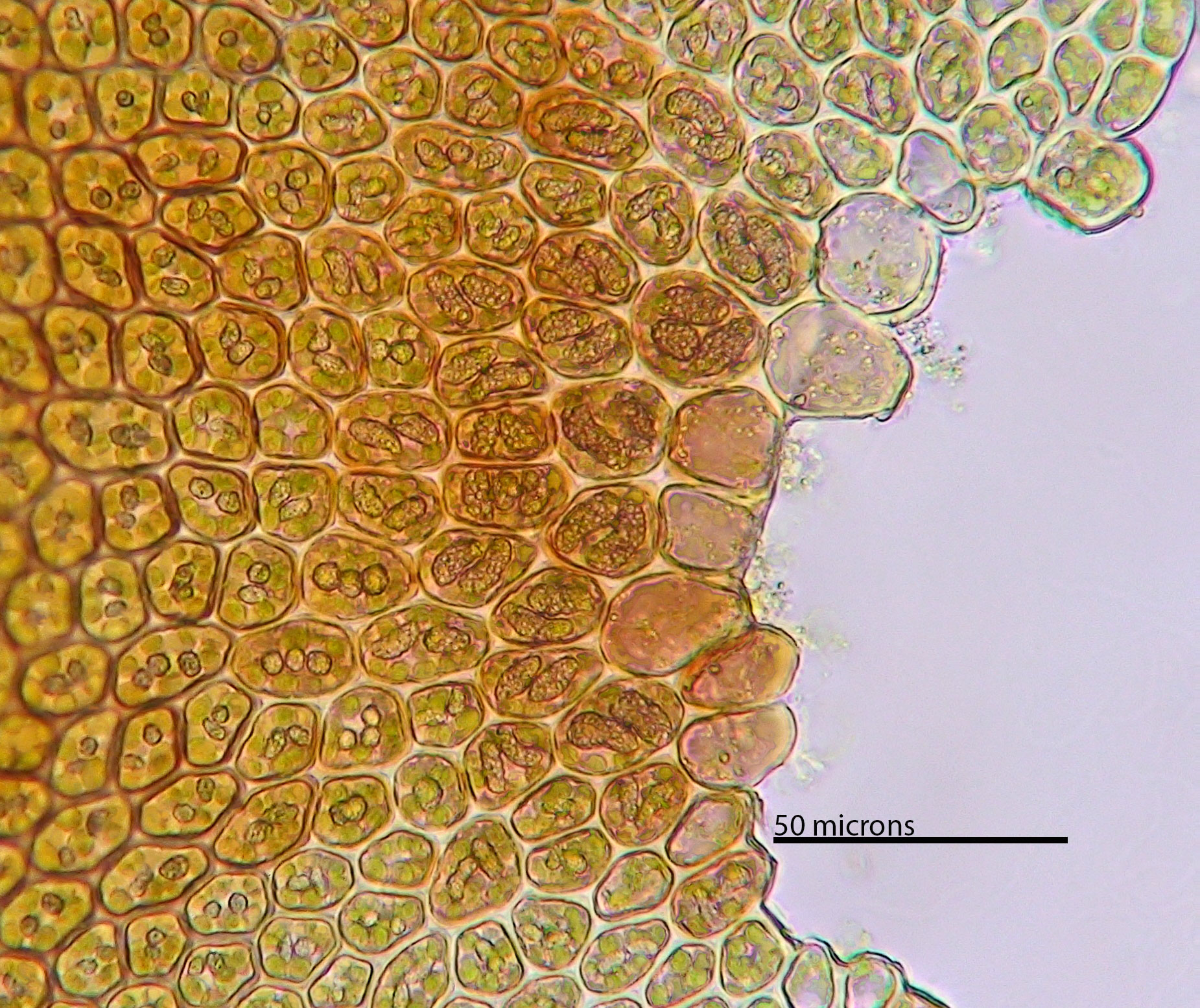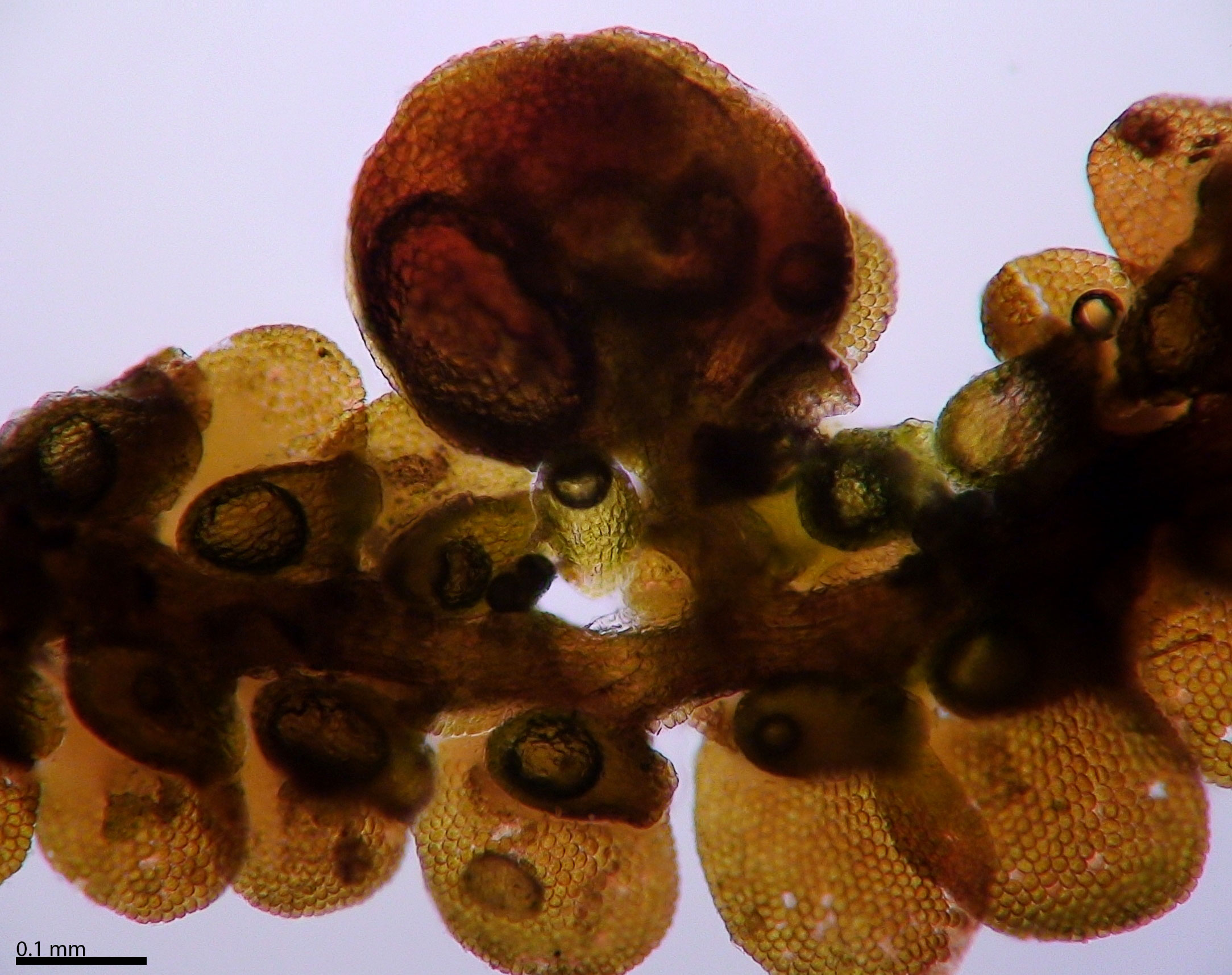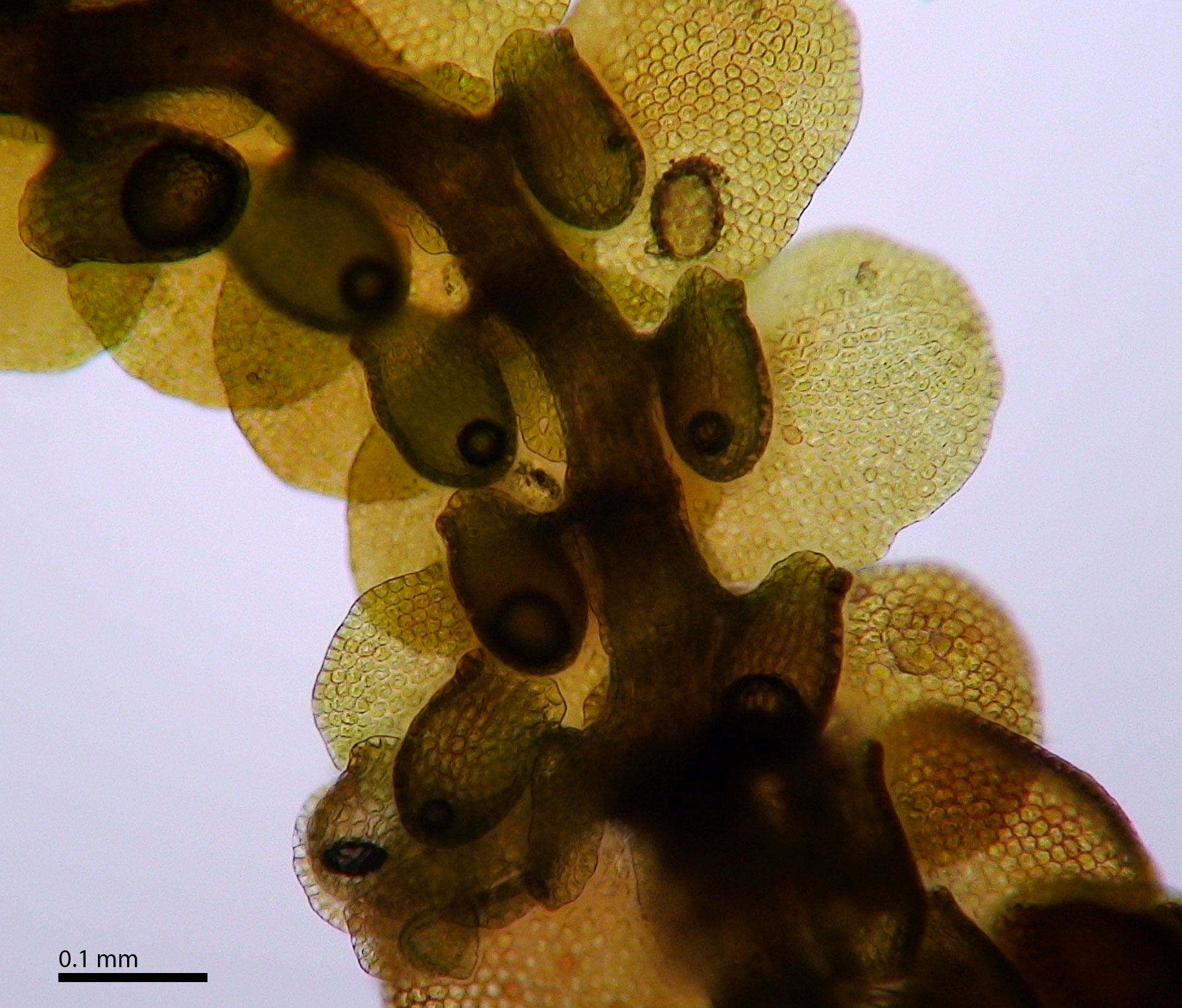Frullania kunzei (Lehm. & Lindenb.) Lehm. & Lindenb.
Family: Frullaniaceae
Synonyms
none recently
NatureServe Conservation Status
G4
Distribution
South America, North America. Florida north to Virgina, west to Oklahoma.
Habitat
In the Southern Appalachians restricted to lower elevations (<2500 ft) occurring on rock and bark of Tsuga canadensis, Acer rubrum, Liquidambar styraciflua, Liriodendron tulipifera, and expected on other hardwood trees expecially red oaks. The species is known to tolerate very dry sites.
Brief Description and Tips for Identification
Shoot width: <1 mm. Color: reddish to nearly black. Cell walls in leaf lobe: without intermediate thickenings. Dorsal lobe insertion: slightly cordate. Lobules: longer than wide.
Monoicous. Perianths without tubercles.
Cells at the base of the dorsal lobe are enlarged with strong trigones and possess two (occasionally three) large oil bodies.
Salient Features
- Monoicous
- Lobules longer than wide
- Cells at base of lobe enlarged with two large oil bodies
- Dark reddish color
F. donnellii, a Coastal Plain species, is very similar but differs in the 3-4 large oil bodies in cells at the base of the leaf lobe and in the usually toothed female bracts.
